As Part of a UIS Course offered by the University of Hartford, STN political reporter David Leal travelled to China alongside seven other students, being exposed to the culture and history of the Chinese Empire.
On the bus Tony, our tour guide, was providing us with some historical context about the Summer Palace. As the name suggests it was the residence of emperors and empresses during the warmer months of April through October. It was connected by water so the emperor could arrive by boat. Construction started in the Qing Dystany in the 1750’s. It was supposed to be a birthday present for the emperor’s mother, but the construction was not completed until after their lifetimes. Although it was damaged in the 19th century wars, Empress Dowager Cixi, had ordered its reconstruction and restoration.
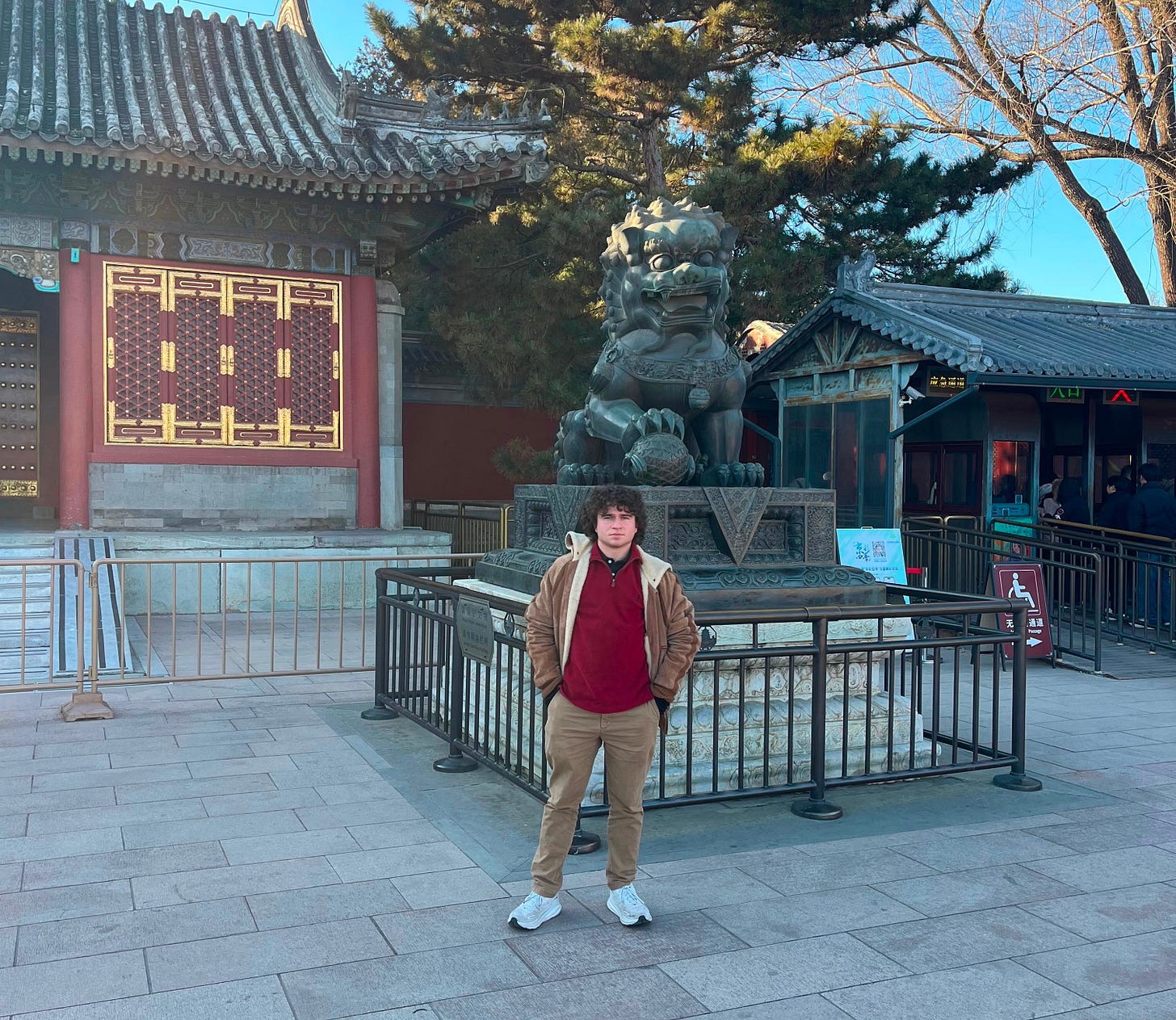

Walking in to the entrance we saw this beautiful building and it honestly was not too busy. I was able to get a photo of it without much other people within the frame. I thought that I would be rather content if we were going to see buildings like this. But this was just scratching the surface, and we had not even entered the ticketing queue. But past that we were met with some gorgeous evergreen trees that provided shade and a vibrant pop of color. It contrasted the cold and dry weather of Beijing and gave more life to the space. Unlike the grid planted trees alongside the highway, these trees were nicely manicured and maintained. From here I could not stop noticing all the trees that were both bare and bearing leaves.
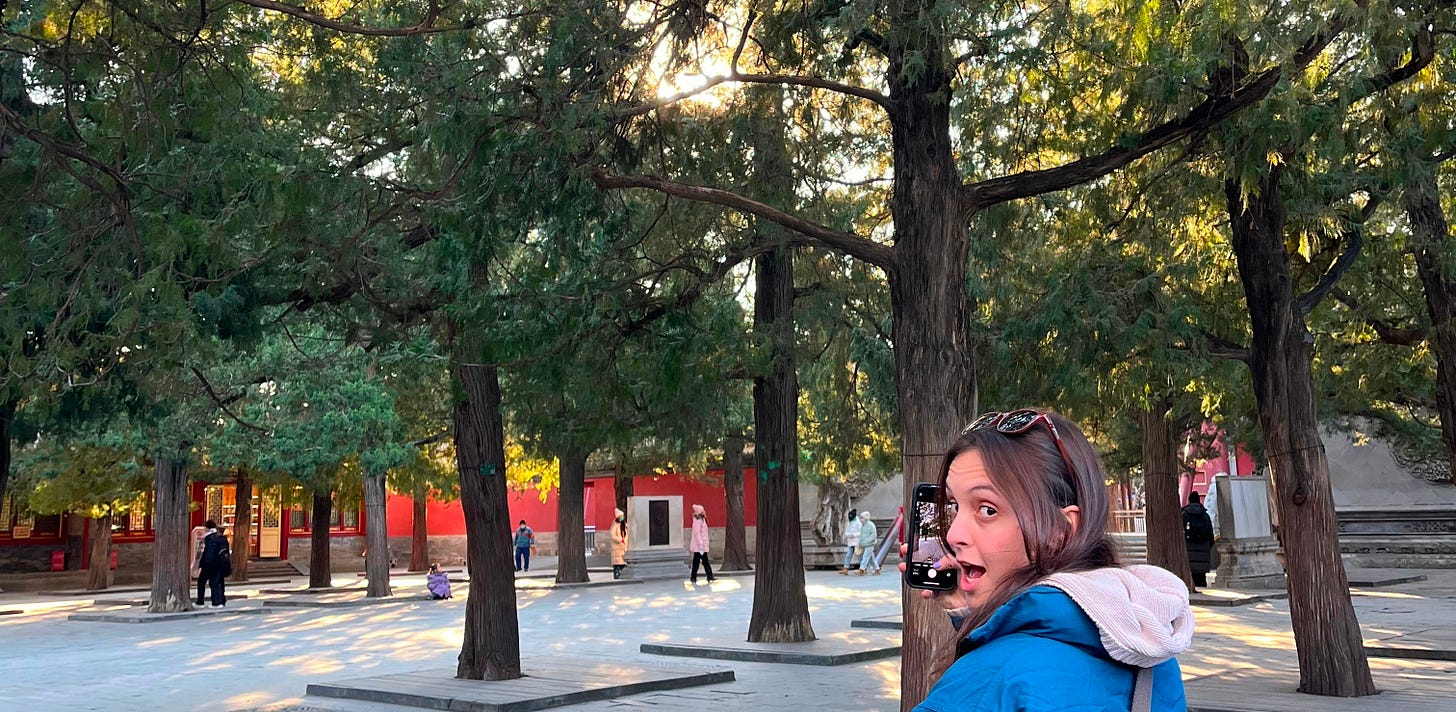
We then walked through another gate to the Hall of Benevolence and Longevity. While in operation, this building served a political purpose where emperors received audiences, managed state affairs, and met with foreign dignitaries. This building was visually stunning and unlike anything I had ever seen. The careful roof work with the terracotta tiling, the intricate details on the buildings, and the overall style of architecture was awe inspiring. The red walls and columns, and the gray terracotta tiles allowed for the gold, blue, and teal accents to really pop. The walls and windows had red and gold designs. And where the columns met the roof there was so much art and tiny details.
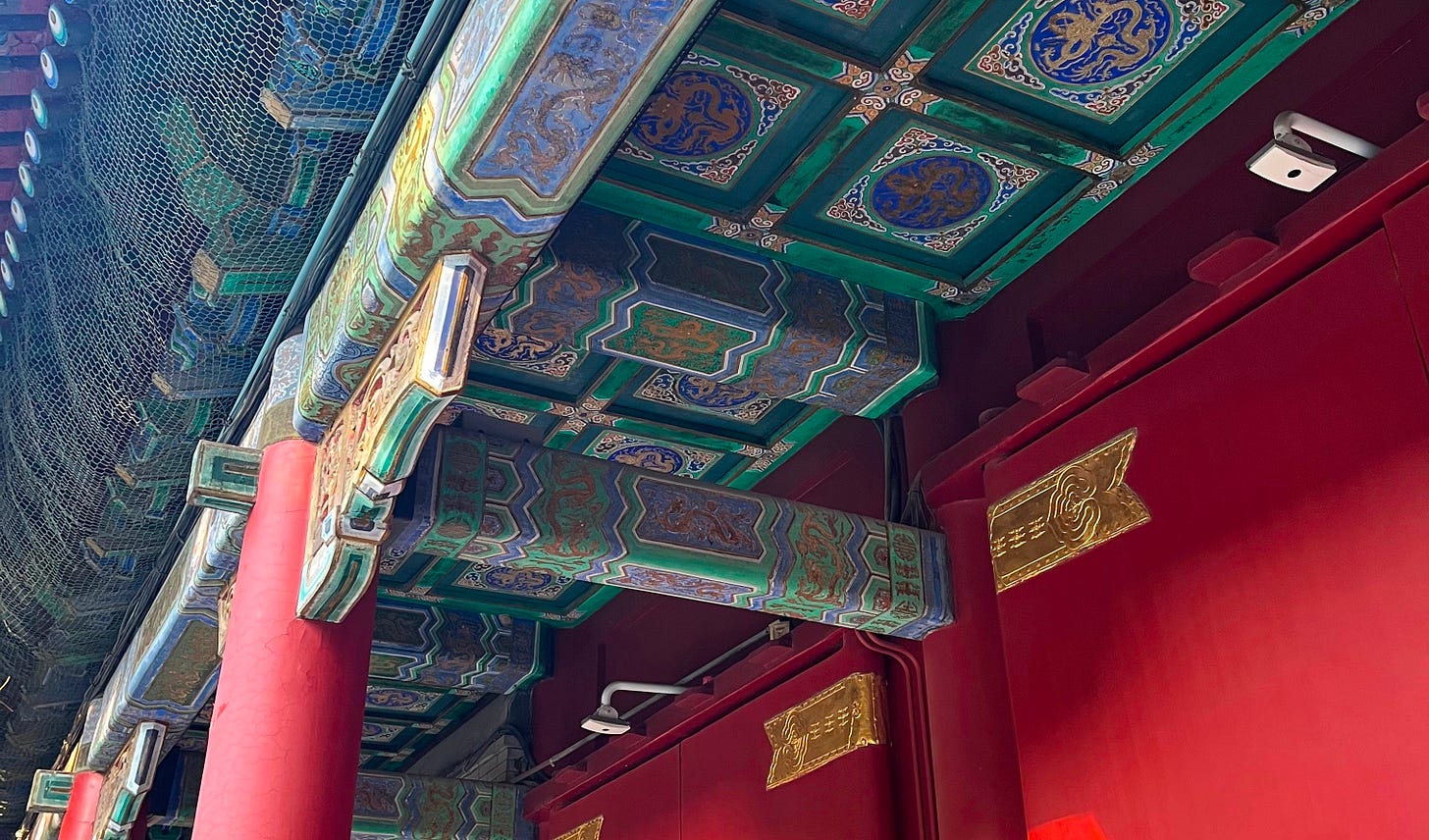
We also learned that the dragon and phoenix statutes were there to represent the male and female dynastic rulers. Before you walked up the Hall, there were statues like limestone rock formations and Qilin which were meant to wade off evil spirits.

After we viewed this hall our tour guide Tony stopped at a map, and I realized we only saw a glimpse of the palace grounds. This made me excited for what was next and what I viewed exceeded my expectations.

The park significantly opened, and we were met with breathtaking views of Kunming Lake, adjacent islands, and the surrounding mountains. The buildings really complimented the natural environment. Out in the distance we saw pagodas, a tall golden arch, pavilions, and towering structures. No matter where you looked you were met with postcard perfect sights. The palace grounds were teeming with activity and combined with the afternoon sun, it added lots of life and energy. My face was lit with awe for the natural and physical beauty of it all. The UNESCO website puts it the best, the “Summer Palace combined political and administrative, residential, spiritual, and recreational functions within a landscape of lakes and mountains, in accordance with the Chinese philosophy of balancing the works of man with nature.” Everything also had some sort of religious and practical meaning. It was difficult to keep up with Tony’s commentary as I was overwhelmed with the elegance of it all. You were hit with the richness of a culture that has been influenced by Buddhists, Taoists, and Confucianism religious customs and from the historical depth that came with dynastic rule.
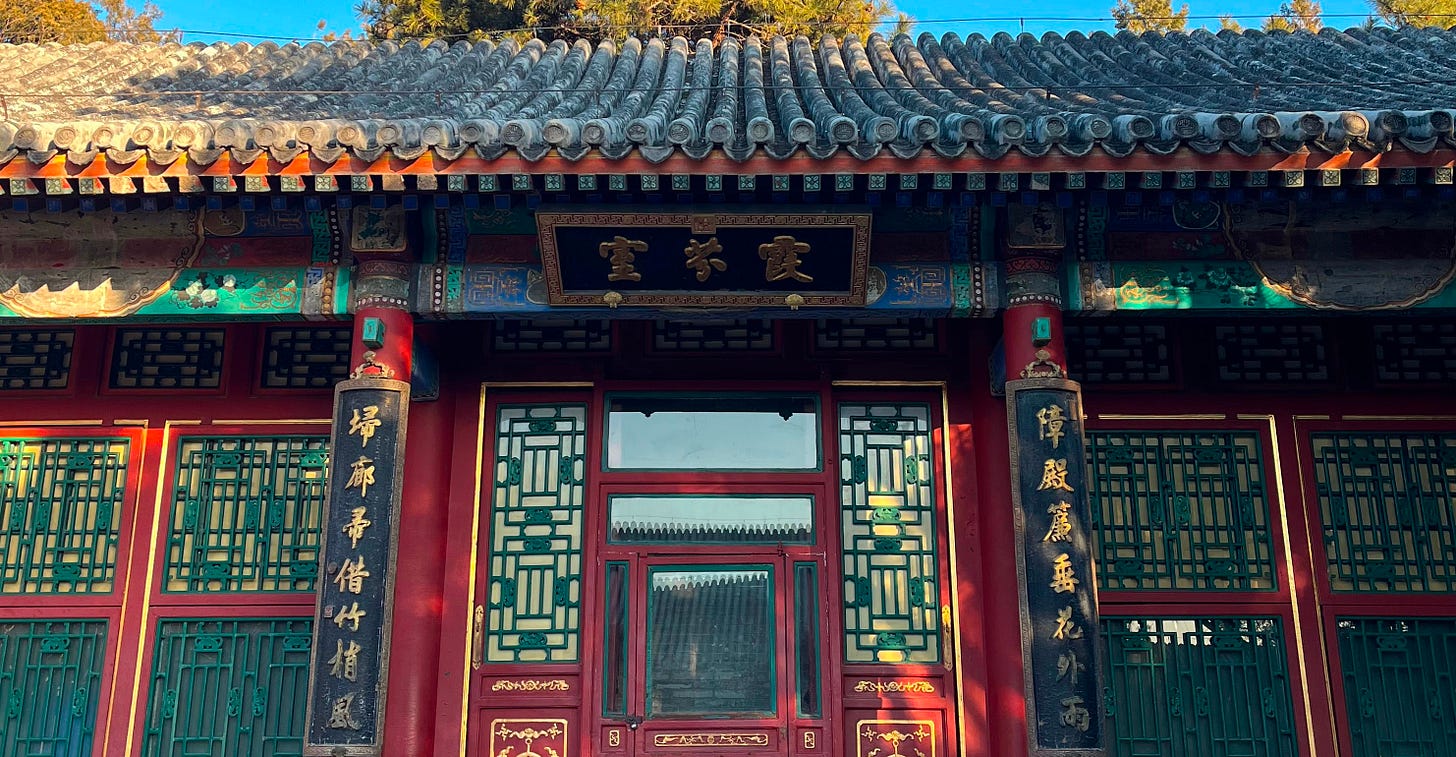
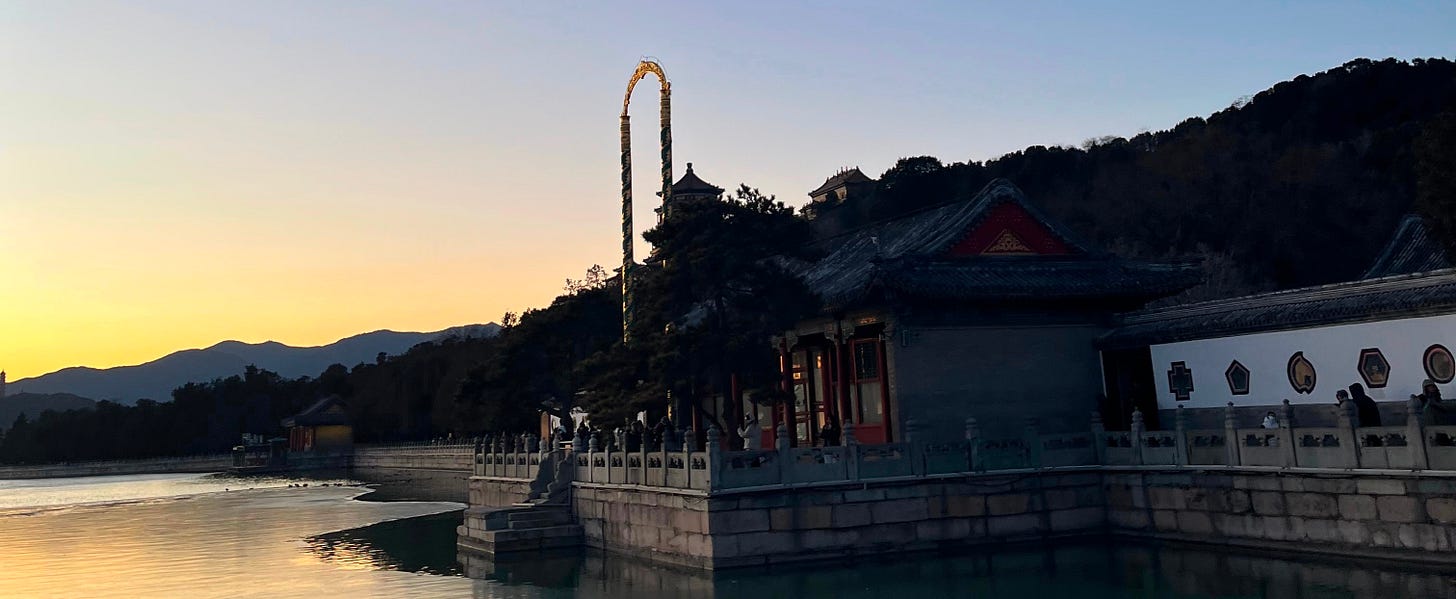
Instead of walking to some of the islands towards the South of the Summer Palace we trekked over to the North side where there were more stunning sights to come. We entered courtyards cleverly designed like dignified jails to keep people trapped in. We walked by this large golden arch which served as the entry docking point for the Emperor or Empress as they arrived at the palace. It hit me that this marvel was constructed and rebuilt with technology from decades and even hundreds of years ago. I could not imagine the palace illuminated by lanterns and staffed by tens of hundreds of loyal servants and guards.

We then entered the Long Corridor which was this detailed emerald colored walkway with equally stunning views of the park. Walking through you admired the tiny details of the craftsmanship on the supporting arches. There were paintings and designs all throughout. Attached to the ceiling beams there were paintings which highlighted nearby scenic landscapes, flowers, birds, and imagery from four of China’s classical novels. Looking past the design, you could admire the natural and physical appeal. To your left, you had the view of the sun slowly starting to set over the lake. As we walked by warm colors slowly began to fill the horizon. To our right there was a parallel walking path with a stream. These paths led to up toward the mountain to the Tower of Buddhist Incense. These views made for some great golden hour flicks. I honestly snapped some great candid pictures here and some fantastic angles that captured the essence of the Summer Palace here.
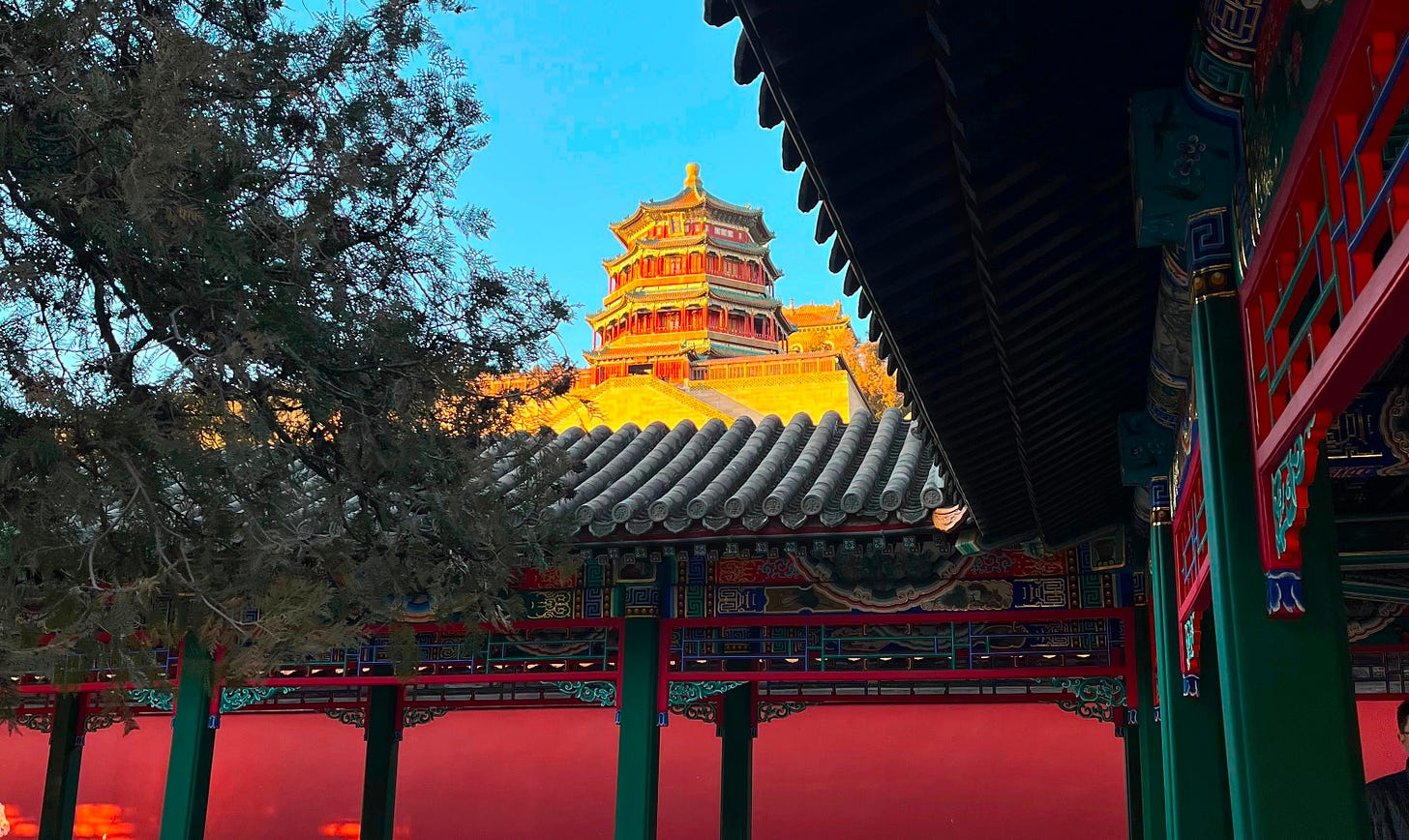
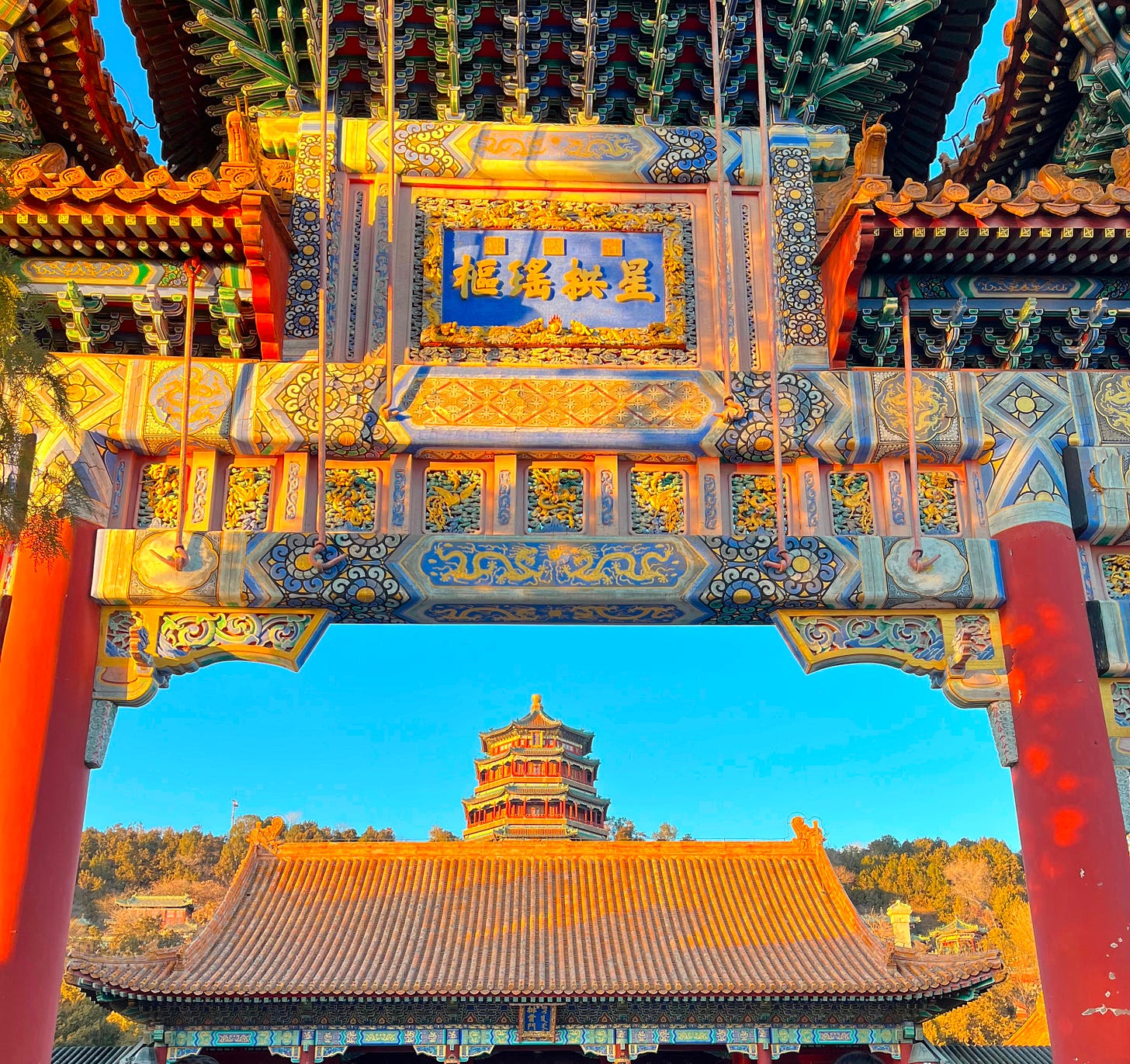
As we walked along this Long Corridor, I imagined what the Summer Palace would look like in a different time. I asked Tony and Dr. Li about certain trees, and they pointed out Kunming Lake has lotus flowers, and a variety of trees like weeping willows, magnolias, and evergreens create a gorgeous array of natural beauty. I could only see through the postcards I bought the density of the leaves of the trees. I can only mentally visualize how the reds and oranges on the gates, temples, and towers contrast with the greenery from the leaves and brightness from the blue sky. Despite seeing mostly bare trees and frozen water, it allowed for more open lines of sight to the manmade structures of the Summer Palace. If I ever go back to Beijing, I would like to come during the summer to see this place when it is more alive.
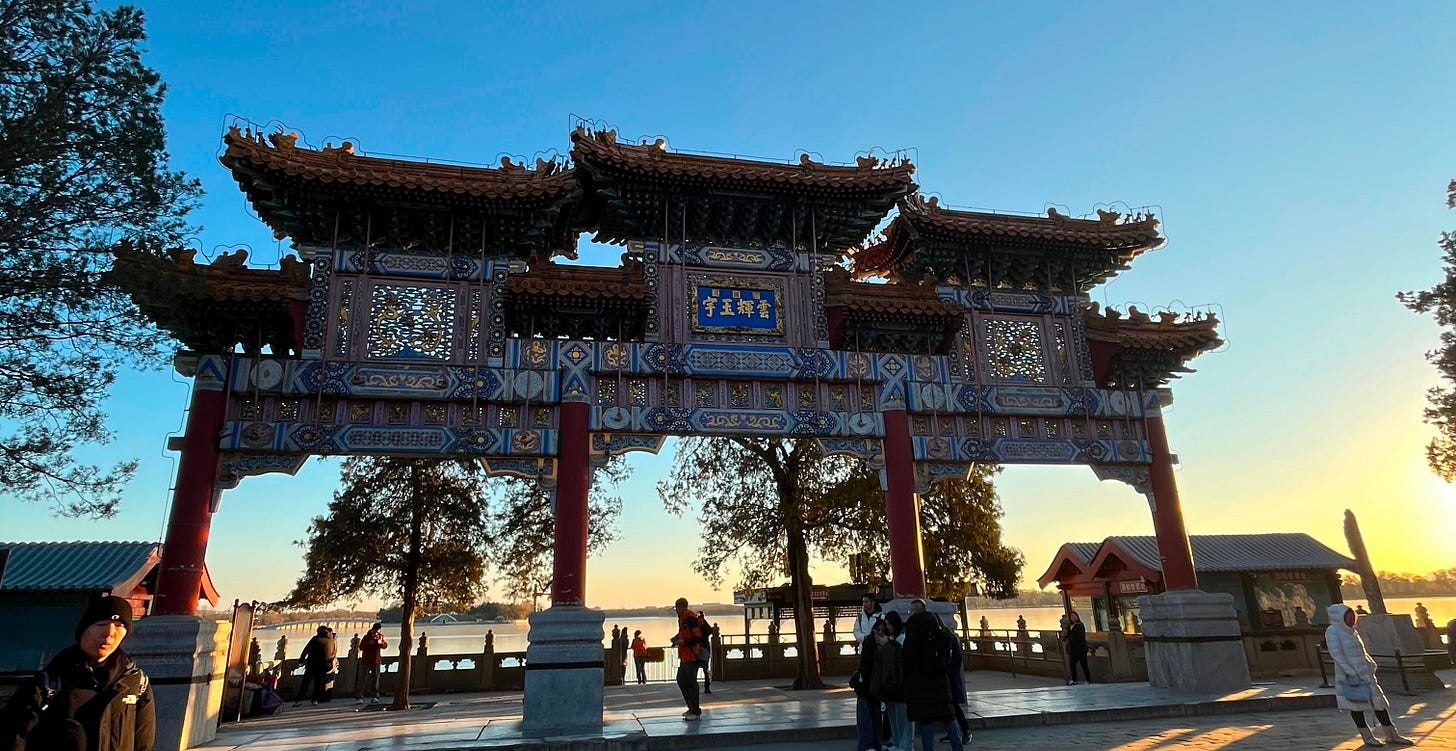
Out in the distance there were pagodas that towered in the mountains. Even with the tall towers and gates, they did not dominate the scene. We walked through the long corridor to this Marble Boat and took a group photo. From the postcard I bought, I learned that the original boat and many areas of the Summer Palace were destroyed during a 19th century battle by Western colonial powers. But Empress Dowager Cixi ordered its reconstruction, along with the rest of the palace.
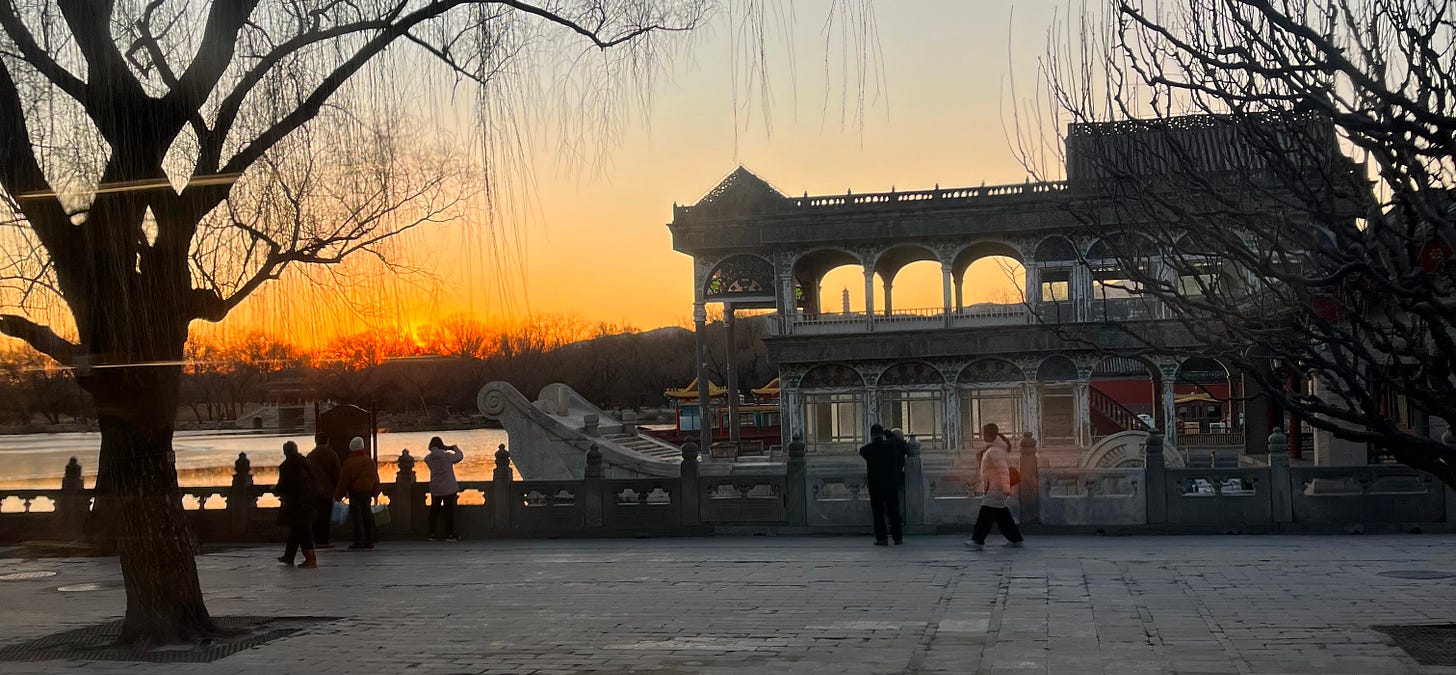
Unfortunately after walking down to the Marble Boat, and stopping at a gift shop, we turned around to exit. I would have loved to spend the entire day, but this was a great way to wrap up a busy day. It is wild to think about how ten hours prior we were all on a congested airplane. I was hungry and looking forward to dinner....